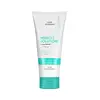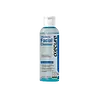What's inside
What's inside
 Key Ingredients
Key Ingredients

 Benefits
Benefits

 Concerns
Concerns

 Ingredients Side-by-side
Ingredients Side-by-side

Water
Skin ConditioningCocamidopropyl Betaine
CleansingDisodium Cocoamphodiacetate
CleansingCocamide DEA
EmulsifyingSodium Chloride
MaskingAcrylates Copolymer
Potassium Cocoyl Glycinate
Potassium Cocoate
EmulsifyingButylene Glycol
HumectantTriethanolamine
BufferingMelaleuca Alternifolia Leaf Oil
AntioxidantCaprylyl Glycol
EmollientHexylene Glycol
EmulsifyingDisodium EDTA
Niacinamide
SmoothingSalicylic Acid
MaskingLactic Acid
BufferingGlycolic Acid
BufferingMelaleuca Alternifolia Leaf Extract
PerfumingGluconic Acid
Mandelic Acid
AntimicrobialSodium Hydroxide
BufferingLactobionic Acid
BufferingSodium Hyaluronate Crosspolymer
HumectantAnthemis Nobilis Flower Extract
MaskingCalendula Officinalis Flower Extract
MaskingMentha Piperita Leaf Extract
Skin ConditioningThymus Vulgaris Extract
PerfumingChrysanthemum Parthenium Extract
Skin ConditioningLippia Citriodora Leaf Extract
AstringentBellis Perennis Flower Extract
Skin ConditioningOriganum Vulgare Leaf Extract
Skin ConditioningSalvia Officinalis Leaf Extract
CleansingUrtica Dioica Extract
AstringentEthylhexylglycerin
Skin ConditioningPentylene Glycol
Skin ConditioningHydroxyacetophenone
AntioxidantTocopherol
AntioxidantPotassium Chloride
Water, Cocamidopropyl Betaine, Disodium Cocoamphodiacetate, Cocamide DEA, Sodium Chloride, Acrylates Copolymer, Potassium Cocoyl Glycinate, Potassium Cocoate, Butylene Glycol, Triethanolamine, Melaleuca Alternifolia Leaf Oil, Caprylyl Glycol, Hexylene Glycol, Disodium EDTA, Niacinamide, Salicylic Acid, Lactic Acid, Glycolic Acid, Melaleuca Alternifolia Leaf Extract, Gluconic Acid, Mandelic Acid, Sodium Hydroxide, Lactobionic Acid, Sodium Hyaluronate Crosspolymer, Anthemis Nobilis Flower Extract, Calendula Officinalis Flower Extract, Mentha Piperita Leaf Extract, Thymus Vulgaris Extract, Chrysanthemum Parthenium Extract, Lippia Citriodora Leaf Extract, Bellis Perennis Flower Extract, Origanum Vulgare Leaf Extract, Salvia Officinalis Leaf Extract, Urtica Dioica Extract, Ethylhexylglycerin, Pentylene Glycol, Hydroxyacetophenone, Tocopherol, Potassium Chloride
Water
Skin ConditioningCocamidopropyl Betaine
CleansingPropylene Glycol
HumectantHydroxypropyl Methylcellulose
Emulsion StabilisingSodium Chloride
MaskingPhenoxyethanol
PreservativeGlycerin
HumectantDMDM Hydantoin
PreservativeSodium Benzoate
MaskingSodium Lauroyl Oat Amino Acids
CleansingDisodium EDTA
Polyquaternium-7
Potassium Hydroxide
BufferingButylene Glycol
HumectantIodopropynyl Butylcarbamate
PreservativeSqualene
EmollientFomes Officinalis Extract
Skin ProtectingEthylhexylglycerin
Skin ConditioningAvena Sativa Kernel Extract
AbrasiveTrehalose
HumectantUrea
BufferingLecithin
EmollientSalix Alba Bark Extract
AstringentGlycyrrhiza Glabra Root Extract
BleachingOpuntia Ficus-Indica Stem Extract
Skin ConditioningPentylene Glycol
Skin ConditioningSerine
MaskingTerminalia Ferdinandiana Fruit Extract
AntioxidantAlgin
MaskingAscorbyl Palmitate
AntioxidantBakuchiol
AntimicrobialBehenic Acid
CleansingCaprooyl Phytosphingosine
Skin ConditioningCaprooyl Sphingosine
Skin ConditioningCaprylyl Glycol
EmollientCeramide AP
Skin ConditioningCeramide EOP
Skin ConditioningCeramide Eos
Skin ConditioningCeramide NP
Skin ConditioningCeramide Ns
Skin ConditioningCeteareth-25
CleansingCetyl Alcohol
EmollientCholesterol
EmollientCitric Acid
BufferingDisodium Phosphate
BufferingGlyceryl Oleate
EmollientGlyceryl Polyacrylate
Glyceryl Stearate
EmollientMagnolia Grandiflora Leaf Extract
Skin ConditioningPEG-40 Hydrogenated Castor Oil
EmulsifyingPotassium Phosphate
BufferingPotassium Sorbate
PreservativePullulan
Sodium Hyaluronate
HumectantTocopherol
AntioxidantWater, Cocamidopropyl Betaine, Propylene Glycol, Hydroxypropyl Methylcellulose, Sodium Chloride, Phenoxyethanol, Glycerin, DMDM Hydantoin, Sodium Benzoate, Sodium Lauroyl Oat Amino Acids, Disodium EDTA, Polyquaternium-7, Potassium Hydroxide, Butylene Glycol, Iodopropynyl Butylcarbamate, Squalene, Fomes Officinalis Extract, Ethylhexylglycerin, Avena Sativa Kernel Extract, Trehalose, Urea, Lecithin, Salix Alba Bark Extract, Glycyrrhiza Glabra Root Extract, Opuntia Ficus-Indica Stem Extract, Pentylene Glycol, Serine, Terminalia Ferdinandiana Fruit Extract, Algin, Ascorbyl Palmitate, Bakuchiol, Behenic Acid, Caprooyl Phytosphingosine, Caprooyl Sphingosine, Caprylyl Glycol, Ceramide AP, Ceramide EOP, Ceramide Eos, Ceramide NP, Ceramide Ns, Ceteareth-25, Cetyl Alcohol, Cholesterol, Citric Acid, Disodium Phosphate, Glyceryl Oleate, Glyceryl Polyacrylate, Glyceryl Stearate, Magnolia Grandiflora Leaf Extract, PEG-40 Hydrogenated Castor Oil, Potassium Phosphate, Potassium Sorbate, Pullulan, Sodium Hyaluronate, Tocopherol
 Reviews
Reviews

Ingredients Explained
These ingredients are found in both products.
Ingredients higher up in an ingredient list are typically present in a larger amount.
Butylene Glycol (or BG) is used within cosmetic products for a few different reasons:
Overall, Butylene Glycol is a safe and well-rounded ingredient that works well with other ingredients.
Though this ingredient works well with most skin types, some people with sensitive skin may experience a reaction such as allergic rashes, closed comedones, or itchiness.
Learn more about Butylene GlycolCaprylyl Glycol is a humectant and emollient, meaning it attracts and preserves moisture.
It is a common ingredient in many products, especially those designed to hydrate skin. The primary benefits are retaining moisture, skin softening, and promoting a healthy skin barrier.
Though Caprylyl Glycol is an alcohol derived from fatty acids, it is not the kind that can dry out skin.
This ingredient is also used as a preservative to extend the life of products. It has slight antimicrobial properties.
Learn more about Caprylyl GlycolCocamidopropyl Betaine is a fatty acid created by mixing similar compounds in coconut oil and dimethylaminopropylamine, a compound with two amino groups.
This ingredient is a surfactant and cleanser. It helps gather the dirt, pollutants, and other impurities in your skin to be washed away. It also helps thicken a product and make the texture more creamy.
Being created from coconut oil means Cocamidopropyl Betaine is hydrating for the skin.
While Cocamidopropyl Betaine was believed to be an allergen, a study from 2012 disproved this. It found two compounds in unpure Cocamidopropyl Betaine to be the irritants: aminoamide and 3-dimethylaminopropylamine. High-grade and pure Cocamidopropyl Betaine did not induce allergic reactions during this study.
Learn more about Cocamidopropyl BetaineDisodium EDTA plays a role in making products more stable by aiding other preservatives.
It is a chelating agent, meaning it neutralizes metal ions that may be found in a product.
Disodium EDTA is a salt of edetic acid and is found to be safe in cosmetic ingredients.
Learn more about Disodium EDTAEthylhexylglycerin (we can't pronounce this either) is commonly used as a preservative and skin softener. It is derived from glyceryl.
You might see Ethylhexylglycerin often paired with other preservatives such as phenoxyethanol. Ethylhexylglycerin has been found to increase the effectiveness of these other preservatives.
Pentylene glycol is typically used within a product to thicken it. It also adds a smooth, soft, and moisturizing feel to the product. It is naturally found in plants such as sugar beets.
The hydrophilic trait of Pentylene Glycol makes it a humectant. As a humectant, Pentylene Glycol helps draw moisture from the air to your skin. This can help keep your skin hydrated.
This property also makes Pentylene Glycol a great texture enhancer. It can also help thicken or stabilize a product.
Pentylene Glycol also acts as a mild preservative and helps to keep a product microbe-free.
Some people may experience mild eye and skin irritation from Pentylene Glycol. We always recommend speaking with a professional about using this ingredient in your routine.
Pentylene Glycol has a low molecular weight and is part of the 1,2-glycol family.
Learn more about Pentylene GlycolChances are, you eat sodium chloride every day. Sodium Chloride is also known as table salt.
This ingredient has many purposes in skincare: thickener, emulsifier, and exfoliator.
You'll most likely find this ingredient in cleansers where it is used to create a gel-like texture. As an emulsifier, it also prevents ingredients from separating.
There is much debate on whether this ingredient is comedogenic. The short answer - comedogenic ratings don't tell the whole story. Learn more about comegodenic ratings here.
The concensus about this ingredient causing acne seems to be divided. Research is needed to understand if this ingredient does cause acne.
Scrubs may use salt as the primary exfoliating ingredient.
Learn more about Sodium ChlorideTocopherol (also known as Vitamin E) is a common antioxidant used to help protect the skin from free-radicals and strengthen the skin barrier. It's also fat soluble - this means our skin is great at absorbing it.
Vitamin E also helps keep your natural skin lipids healthy. Your lipid skin barrier naturally consists of lipids, ceramides, and fatty acids. Vitamin E offers extra protection for your skin’s lipid barrier, keeping your skin healthy and nourished.
Another benefit is a bit of UV protection. Vitamin E helps reduce the damage caused by UVB rays. (It should not replace your sunscreen). Combining it with Vitamin C can decrease sunburned cells and hyperpigmentation after UV exposure.
You might have noticed Vitamin E + C often paired together. This is because it is great at stabilizing Vitamin C. Using the two together helps increase the effectiveness of both ingredients.
There are often claims that Vitamin E can reduce/prevent scarring, but these claims haven't been confirmed by scientific research.
Learn more about TocopherolWater. It's the most common cosmetic ingredient of all. You'll usually see it at the top of ingredient lists, meaning that it makes up the largest part of the product.
So why is it so popular? Water most often acts as a solvent - this means that it helps dissolve other ingredients into the formulation.
You'll also recognize water as that liquid we all need to stay alive. If you see this, drink a glass of water. Stay hydrated!
Learn more about Water